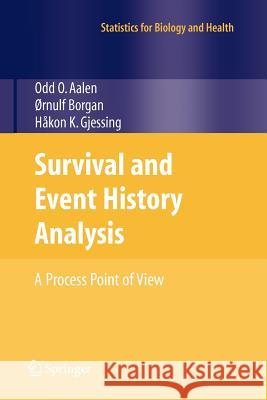Survival and Event History Analysis: A Process Point of View » książka
Survival and Event History Analysis: A Process Point of View
ISBN-13: 9781441919090 / Angielski / Miękka / 2010 / 540 str.
Time-to-event data are ubiquitous in fields such as medicine, biology, demography, sociology, economics and reliability theory. Recently, a need to analyze more complex event histories has emerged. Examples are individuals that move among several states, frailty that makes some units fail before others, internal time-dependent covariates, and the estimation of causal effects from observational data. The aim of this book is to bridge the gap between standard textbook models and a range of models where the dynamic structure of the data manifests itself fully. The common denominator of such models is stochastic processes. The authors show how counting processes, martingales, and stochastic integrals fit very nicely with censored data. Beginning with standard analyses such as Kaplan-Meier plots and Cox regression, the presentation progresses to the additive hazard model and recurrent event data. Stochastic processes are also used as natural models for individual frailty; they allow sensible interpretations of a number of surprising artifacts seen in population data. The stochastic process framework is naturally connected to causality. The authors show how dynamic path analyses can incorporate many modern causality ideas in a framework that takes the time aspect seriously. To make the material accessible to the reader, a large number of practical examples, mainly from medicine, are developed in detail. Stochastic processes are introduced in an intuitive and non-technical manner. The book is aimed at investigators who use event history methods and want a better understanding of the statistical concepts. It is suitable as a textbook for graduate courses in statistics and biostatistics.











